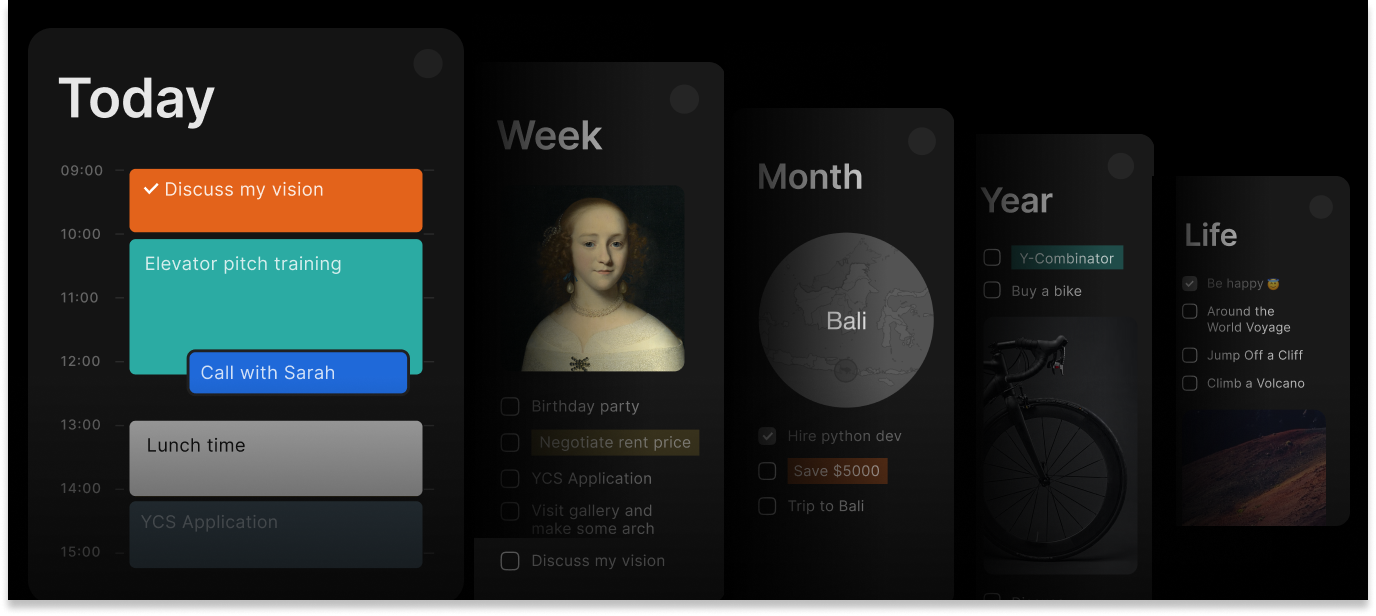What Does It Mean To Eat The Frog?

In the world of productivity and time management, the “eat the frog” technique represents one of the most powerful strategies for overcoming procrastination and maximizing daily achievement. When professionals ask what does “eat the frog” mean? , they’re discovering a transformative approach that involves tackling their most challenging or important task first thing in the morning. This concept, which forms the foundation of “eat the frog” time management, has evolved into a comprehensive productivity system where the technique helps individuals prioritize impact over comfort. The “eat the frog” method isn’t just about completing difficult tasks—it’s about strategically using your peak mental energy when it matters most. To truly understand what is “eat the frog” as a systematic approach, you need to recognize that it flips our natural tendency to avoid challenging work, instead encouraging us to embrace discomfort early when our willpower is strongest.
Understanding the eat the frog meaning can transform how you approach your most challenging tasks and revolutionize your productivity levels.
The Metaphor Behind “Eating the Frog”
The vivid imagery of consuming an amphibian might seem bizarre at first glance, but the metaphor carries profound psychological weight. Imagine having to eat a live frog every morning – most people would dread this prospect and procrastinate endlessly. However, if you absolutely had to do it, getting it over with immediately would eliminate hours of anxiety and mental torment.
This same principle applies to our daily responsibilities. We all have those tasks that make us cringe – whether it’s making difficult phone calls, writing complex reports, having uncomfortable conversations, or tackling overwhelming projects. These become our metaphorical “frogs,” sitting in our consciousness and draining mental energy through avoidance.
The beauty of this metaphor lies in its universal relatability. Everyone can identify their personal “frogs” – those tasks that trigger procrastination reflexes and create internal resistance. By acknowledging these challenging responsibilities as frogs, we can develop a more strategic relationship with discomfort and difficulty.
The Core Concept and Its Origins
The basic idea is simple: start your day with the most challenging or important task. Not the easy stuff, but exactly what you least want to do or what seems the most difficult.
There’s real logic behind this approach. In the morning, our brains work at their best - you’re not tired yet, haven’t gotten distracted by a bunch of small things, and your focus is at its peak. Plus, when you tackle something tough first thing in the morning, the rest of your day flows much more smoothly. There’s this great feeling of relief knowing the hardest part is already behind you, and you get rid of that constant mental weight that eats away at you when important tasks remain undone.
This approach flips the usual “warm up with easy tasks” mentality. Instead of checking email first or doing something simple to get going, you dedicate your fresh mental energy to what matters most, not whatever’s left over after handling minor items.
The phrase “eat the frog” originates from Mark Twain’s quote: “If it’s your job to eat a frog, it’s best to do it first thing in the morning. And if it’s your job to eat two frogs, it’s best to eat the biggest one first.” The concept gained significant prominence through Brian Tracy’s influential book “Eat That Frog!” published in 2001, which transformed this folksy wisdom into a comprehensive productivity system. Since then, the philosophy has evolved through contributions from productivity experts, psychologists, and business leaders, incorporating findings from behavioral psychology and neuroscience research.
Key Benefits
Implementing eat the frog time management strategies delivers numerous advantages that extend beyond simple task completion. The primary benefit involves psychological relief – eliminating your most stressful task early creates a sense of lightness that permeates the entire day. This emotional shift often proves more valuable than the task completion itself.
Energy optimization represents another crucial advantage. By tackling demanding work when your mental resources are freshest, you maximize the quality of your output while minimizing the emotional cost of difficult tasks. This strategic energy allocation prevents the common afternoon slump that accompanies procrastination.
The approach also builds momentum through accomplishment. Successfully completing challenging tasks early creates positive psychological momentum that makes subsequent tasks feel more manageable. This ripple effect often leads to extraordinarily productive days that exceed normal expectations.
Decision fatigue reduction constitutes another significant benefit. By predetermined which task deserves priority (your biggest frog), you eliminate the mental energy typically spent on task selection and prioritization throughout the day. This preserved mental energy becomes available for creative and strategic thinking.
Long-term confidence building represents perhaps the most transformative benefit. Regular practice of choosing difficulty over comfort develops psychological resilience and self-efficacy. Over time, practitioners often discover that tasks they once considered overwhelming become routine challenges.

Step-by-Step Implementation Guide
The process begins the evening before, during your daily review session. Examine your upcoming tasks and identify the one that creates the most internal resistance or carries the highest importance for your long-term goals.
Step 1: Evening Preparation
Before ending your workday, review tomorrow’s responsibilities and select your primary frog. Write this task at the top of your priority list and gather any resources you’ll need for completion. This preparation eliminates morning decision-making and reduces barriers to immediate action.
Step 2: Morning Ritual Design
Create a consistent morning routine that leads directly to frog consumption. This might include brief physical exercise, meditation, or coffee preparation – whatever helps you achieve optimal mental state. The key involves designing a ritual that naturally flows into focused work.
Step 3: Environment Optimization
Prepare your workspace for maximum focus before beginning your frog. Remove distractions, silence notifications, and ensure all necessary tools are readily available. Consider using website blockers or airplane mode to eliminate digital temptations.
Step 4: Time Boxing
Allocate a specific timeframe for frog completion, typically ranging from 30 minutes to 2 hours depending on task complexity. Having defined boundaries creates urgency and prevents perfectionism from derailing progress.
Step 5: Single-Tasking Focus
Commit to working exclusively on your frog during the allocated time. Resist urges to check emails, respond to messages, or switch between tasks. This dedicated focus amplifies your effectiveness and accelerates completion.
Step 6: Completion Celebration
Acknowledge your accomplishment upon finishing your frog. This recognition reinforces positive behavior patterns and builds motivation for future frog-eating sessions.
Choosing the Right “Frog”
Choosing the right frog requires careful consideration of multiple factors that extend beyond simple difficulty assessment. The most effective frogs typically combine high importance with high resistance – tasks that significantly impact your goals while triggering procrastination tendencies.
- Evaluate how each potential frog contributes to your long-term objectives.
- Pay attention to your emotional responses when contemplating different tasks.
- Apply the classic Eisenhower Matrix to distinguish between urgent and important tasks.
- Consider the mental and physical energy demands of different tasks.
- Prioritize tasks that stretch your capabilities and contribute to professional growth.
For more information on how to effectively identify your most important tasks, read our article Mastering Task Decomposition.
Obstacles That Sabotage Frog-Eating Success
You know what’s funny? Even when people are genuinely committed to tackling their important tasks first thing in the morning, they keep running into the same obstacles over and over again.
First off, tons of people turn simple tasks into these elaborate preparation ceremonies. You know the type - they can spend a whole week planning how they’re going to do something that would actually take an hour. It’s like preparing to prepare, if that makes sense. Instead of just diving in and getting it done.
Then there’s the whole issue with choosing the right tasks. People either pick something so overwhelming that they immediately get scared and give up, or they go for something so trivial that they’re just wasting their best energy hours. You need that sweet spot - something that challenges you a bit but doesn’t send you into panic mode. Think of it like the difference between a good workout and trying to climb Everest.
Another big trap is wanting everything to be perfect from the start. And because of that perfectionist mindset, they end up doing nothing at all! This is especially true with tasks they’ve been putting off for ages. It’s way better to do something decently and improve it later than to never start at all.
And then there are phones, notifications, social media - that’s a whole other story. The moment things get tough, suddenly there’s an “urgent” message or “important” news that needs immediate attention. You really need to create some boundaries here, maybe treat your phone like a fire alarm that only goes off for real emergencies.
The last thing is consistency. Many people start strong, keep it up for a few days, then just drop it completely. But the key is sticking with it regularly. If you’re having a rough day, it’s better to do something small than to skip entirely. Building the habit is more important than the scale of what you accomplish.
Personal Experience
Even writing this article became a kind of “frog.” In this short section, I want to share my experience of using the method described.
After repeatedly postponing this task, I realized I couldn’t delay any longer. Last night, I added it to my to-do list for the next day, marking it in red and placing it at the top. Within the task, I prepared a plan to jumpstart my morning:
- I collected the sources I needed to review to write the text.
- I outlined the article’s structure to avoid staring at a blank page, unsure where to begin.
- I set time limits for each stage to keep myself on track.
- Bonus tip: I told my colleagues I’d send them the finished material by tomorrow, eliminating any chance of further procrastination.
The next morning, I woke up with a clear plan. I silenced my phone notifications, opened Timestripe, and followed my prepared steps. After each stage, I took a 15-minute break to recharge—a snack, some light exercise, or a coffee—but avoided distractions like side tasks or mindless scrolling, focusing on quality rest to maintain focus.
By the time my timer went off, I’d completed about 80% of the work. Since finishing a “frog” is key, I gave myself extra time to wrap it up. When it was done, I felt an overwhelming sense of pride and relief, knowing the toughest part of my day was behind me. This energy carried me through my remaining tasks, and by day’s end, I’d completed my entire to-do list, feeling disciplined and fearless in the face of big challenges.
How to Eat Frogs as a Team?
At some point, your entire team might find itself in a swamp, surrounded by thickets hiding dozens of “frogs”. Their incessant croaking creates a persistent noise that makes it feel like escape is impossible.
Don’t give in to this fear! Just as in individual work, this method can help tackle tasks facing multiple people.
Start by gathering all team members together (Timestripe’s Spaces are perfect for this) and assign tasks to those best suited to handle them, or let team members choose their own “frogs” based on preference. Set clear deadlines for each task, and don’t leave teammates to face their “frogs” alone. Support each other and celebrate colleagues’ successes, as acknowledging even small victories greatly boosts motivation to keep going.
Don’t hesitate to ask for help: not every task can be easily tackled solo, and that’s okay! Some “frogs” are worth sharing with a partner.
Track the team’s progress in the Progress Center, recognize each other’s achievements, and discuss challenges that arise while “clearing” your swamp. Over time, you’ll notice the swamp has transformed into a clear, beautiful lake, and thanks to the team’s coordinated efforts and discipline, some tasks will no longer feel daunting or unpleasant.
Two Futures: Your Choice Starts Tomorrow
Still skeptical about whether eating the frog can truly transform your life? Let’s paint two vivid pictures of where you’ll be six months from now, based on the choice you make tomorrow morning.
Future A: You Continue as Before
It’s 6 months later. You wake up with that familiar knot in your stomach—the same important project still lurks unfinished, now joined by several new “urgent” tasks that have piled up while you’ve been avoiding the hard stuff. Your days follow the same exhausting pattern: check emails first (finding three new problems that “need immediate attention”), tackle a few quick wins to feel productive, then spend the afternoon wrestling with that growing sense of dread about what you’re not doing.
By 3 PM, you’re mentally drained from fighting internal resistance all day. The important work—the stuff that could actually move your career forward, improve your relationships, or advance your personal goals—sits untouched again. You promise yourself “tomorrow will be different,” but deep down, you know it won’t be.
Your stress levels remain chronically elevated. Colleagues and family members notice your constant underlying tension. You’ve become someone who talks about big plans but struggles to execute them. The gap between your potential and your actual achievements grows wider each month. You’re busy, always busy, but somehow never making meaningful progress on what truly matters.
Future B: You Start Eating Frogs Tomorrow
Same timeline, six months later. You wake up energized, knowing that your most challenging task will be conquered before most people finish their first coffee. This has become your secret weapon—while others procrastinate, you’re already winning.
Those projects that once seemed impossible? You’ve completed three of them and started two more. Your confidence has skyrocketed because you’ve proven to yourself repeatedly that you can handle difficult things. Colleagues seek your advice on getting things done. Your manager has noticed your ability to deliver on complex assignments ahead of schedule.
The chronic stress that used to plague your afternoons has vanished, replaced by a calm satisfaction that comes from knowing your hardest work is behind you. You sleep better because your mind isn’t racing with undone tasks. Your personal relationships have improved because you’re fully present instead of mentally wrestling with avoided responsibilities.
Most surprisingly, you’ve discovered that many tasks you once considered “impossible frogs” have become routine challenges. Your comfort zone has expanded dramatically. You’ve become someone who moves toward difficulty instead of away from it, and this shift has opened doors you never expected.
The Choice Is Tomorrow Morning
These aren’t fantasies—they’re predictable outcomes based on consistent daily choices. Future A represents the compound effect of avoidance, while Future B shows what happens when you systematically choose courage over comfort.
The beautiful truth is that you don’t need to believe in this method for it to work. You just need to try it once. Tomorrow morning, identify your biggest, most important, most avoided task. Set aside your first hour for it. See what happens.
Six months from now, you’ll be living in one of these futures. The only question is: which one will you choose?
Read next



